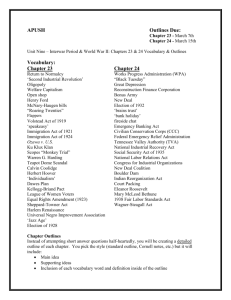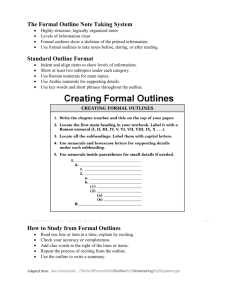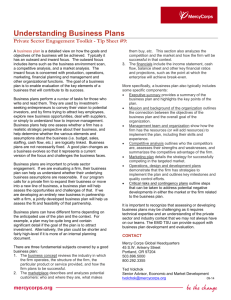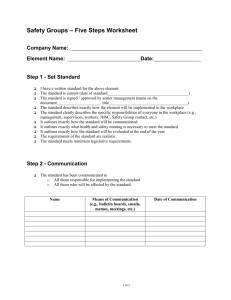Ao`ao `i`iwi
advertisement
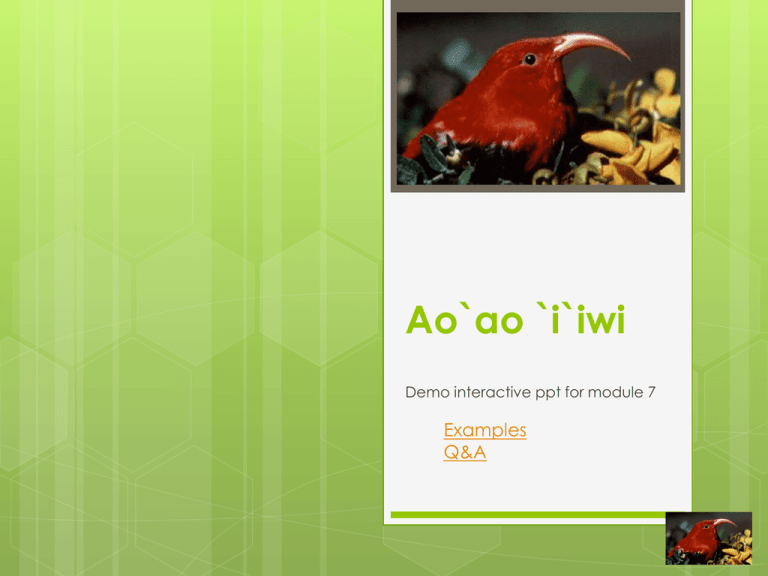
Ao`ao `i`iwi Demo interactive ppt for module 7 Examples Q&A Introduction – Content Area The content area for our group is inside a database (“Curriculum Central”) being introduced to the University of Hawaii system, a database to record and store course outlines. For the purposes of ETEC 750B we will use the test version of the database which is located at http://cctest.its.hawaii.edu:8080/central/core/cas.jsp The database is in use at a few campuses in the UH system: UH Hilo, Kapi’olani Community College, Leeward Community College, and UH Maui College. The database is soon to be piloted by the UHM College of Education, Windward Community College, and Kaua`i Community College. Introduction – target population The population being taught are college faculty, tenured and untenured, all with a minimum of a master’s degree in their content area, some with a PhD. No assumption can be made for computer skills, organizational skills, or logic skills that the faculty may or may not have. Previous experience has shown that even faculty who teach computer courses often have difficulty the first few times that they encounter the three questions that we will focus on in the project. Previous experience has shown that some faculty may not have organized their course content around the competencies to be attained by the students. Some faculty may not yet have thought about and connected how their course content may support degree or certificate learning outcomes. Introduction – task/problem Our project will focus on how to prepare three types of course outlines used by Kapi’olani Community College, a progression of whole problems. The skills used in answering the questions build in increasing complexity. Basic navigation skills learned previously are assumed. The project will focus on specific sections of outlines to (1) make a course inactive, (2) update a course that exists in skeletal version, or (3) create a new course. The instructional materials prepared for ETEC 750B will focus on the tasks expected of the course proposer rather than the tasks for course reviewers and tasks for course approvers. Example of Inactive course Text here explaining the big differences (fewer fields to fill out) and the small differences (less to fill out in a required field) Text over graphics here Instructions specific to inactive courses What to do if you make a mistake (placeholder) What a proposer might see blah blah (placeholder) Quiz about inactive courses Example of skeleton of existing course Text explaining why this is different from other course outlines Sample of skeleton Instructions specific to existing skeleton course outlines demonstration of mouseover demonstration of prerequisite input demonstration of another prereq input Quiz about skeleton courses Examples of new courses from scratch Title of course Text or pdf image of a portion of an outline Title of other course Text or pdf image of a portion of an outline Instructions specific to new courses (Test audio only – a placeholder) Quiz about new courses Summary or comparison chart for three types of courses Q&A from peer review Why there is a need to store course outlines in a database? A current administrative decision is that outlines are to be shared and/or accessible between the ten campuses of the UH system. Currently at many campuses the course outlines (if they exist) are paper documents stored in file cabinets. Q&A from peer review From my understanding, your project will be focused on teaching people how to use the skills to manipulate the database or how to answer those three questions? The revised project will focus on the increased complexity from a more simple course deactivation, to a more complex update of a skeletal version of a course, to the most complex – creation of a new course outline. Q&A from peer review Does this database work like the Laulima system? No, not at all. Perhaps you are confusing courses with class sections. A course outline in Curriculum Central can be thought of as a master course that all class sections are based on, for example the first semester of French might be FR 101. Students enroll in FR101 taught by professor X on Tuesdays and Thursdays as a specific class section with a CRN number in the Banner registration system. The course outline for freshman mathematics (MATH 100) in Curriculum Central would be the master course that suggests content, course objectives, and grading methods for any and all MATH 100 classes. The individual MATH 100 sections assigned to specific professors are referred to as classes.
